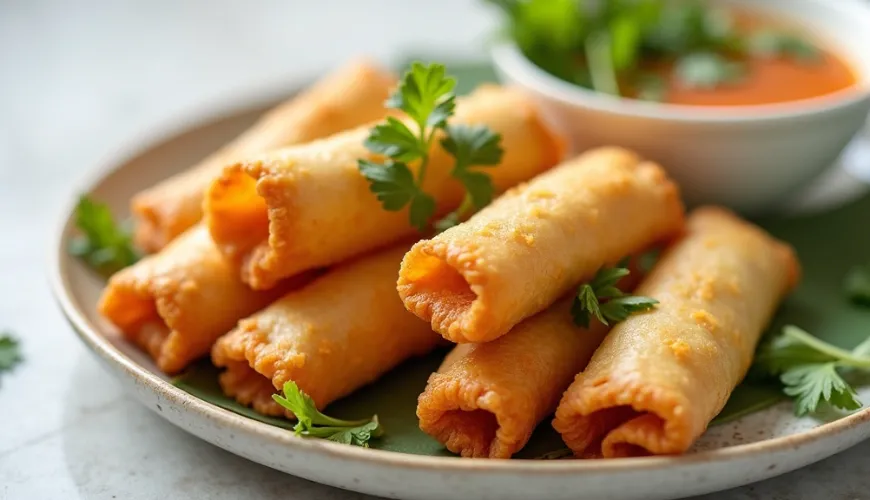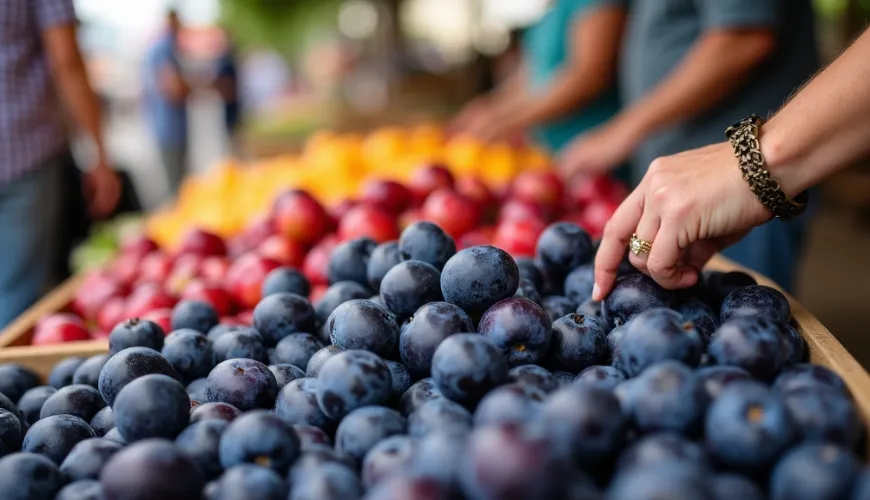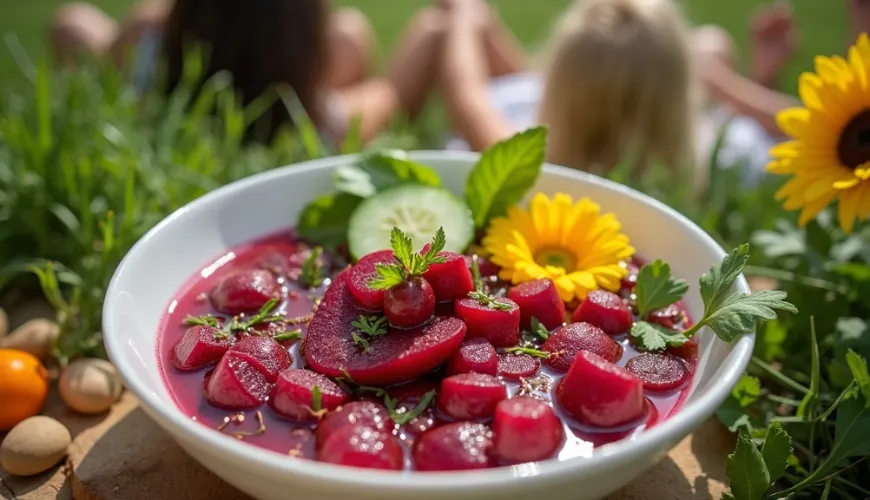
Fried rolls are a healthy choice for any occasion

Fried Spring Rolls - A Taste of the Far East in Czech Cuisine
Delicately crispy, golden-fried dough that reveals a juicy filling with the bite, full of the aromas of oriental spices, vegetables, and meat. Fried spring rolls, also known as spring rolls, have secured a permanent place on Czech tables in recent years. And it's no wonder—this iconic Southeast Asian delicacy combines simplicity, versatility, and a bold flavor that even the most discerning gourmets will love.
Whether it's the famous Vietnamese fried spring rolls (nem rán or chả giò), or a homemade version filled with minced meat, each recipe has its charm. But what is the secret to their popularity, and how can you prepare them at home to taste like those from an authentic Asian restaurant?
Roots in Asia, Home Around the World
Spring rolls are widespread throughout Asia, from China to Thailand. They are prepared slightly differently in each country, varying in both the dough used and the filling composition. While in China, rolls with delicate wheat dough and vegetables are predominant, in Vietnam, rice paper is more commonly used, and the filling often includes minced pork, glass noodles, shiitake mushrooms, and fish sauce.
In Vietnam, fried spring rolls are a traditional part of festive tables, as well as a quick snack served with nuoc cham sauce and fresh herbs. It is this combination of crispy and fresh that makes the meal an authentic taste experience.
In the Czech Republic, the Vietnamese community has helped popularize this delicacy, making it easy to find spring rolls in bistros, convenience stores, or even order them online. But nothing compares to homemade preparation—especially when you know how to do it.
How to Prepare Homemade Fried Spring Rolls with Minced Meat
There are countless recipes. Every family has its own, passed down and modified according to available ingredients and taste. But if you are looking for a tried-and-true recipe for fried spring rolls with minced meat that is tasty, simple, and doesn't require exotic ingredients, you can base it on the basic Vietnamese version with rice paper.
Basic Ingredients:
- Rice paper (available in most supermarkets)
- Minced pork (can also be combined with chicken)
- Glass noodles
- Dried mushrooms (shiitake or wood ear)
- Grated carrot, onion, garlic
- Egg to bind the mixture
- Soy or fish sauce, pepper, salt
The mixture is combined, left to rest for a while, and then wrapped in moistened rice paper. They are fried in oil until golden brown, but the rule here is: less is more. The rolls should be golden, not over-fried, with a crispy crust.
A useful tip from Vietnamese cuisine states: "The spring roll must be fried slowly so that the entire filling heats through and the dough remains crispy and light."
Whether you choose a vegetarian filling, with tofu, with shrimp, or unconventionally with mushrooms and beetroot, the important thing is that the taste is balanced and gentle. This makes the dish not only delicious but also digestible.
Spring Rolls as Part of a Healthy Lifestyle?
It might not seem so at first glance, but fried spring rolls can be part of a healthy and balanced diet—it mainly depends on the preparation and quality of the ingredients. Instead of frying in a deep fryer, you can opt for baking in the oven with a light spray of oil. Furthermore, rice paper has minimal calories and is gluten-free, which is appreciated by people with gluten intolerance.
Using fresh ingredients and herbs, the absence of artificial flavorings, and the ability to customize the filling to one's taste make spring rolls a very versatile and healthy meal. If combined with leafy salads and rice noodles, they can even replace a light main course.
One of the reasons why Vietnamese fried spring rolls are so popular is precisely their ability to combine a taste experience with a feeling of lightness. Although they are fried, they don't feel heavy—thanks to the use of herbs like coriander, mint, or Thai basil, the dish gains a fresh touch.
A Great Life Tip - Spring Rolls as a Family Ritual
In many Vietnamese households, preparing spring rolls is a social event. Children soak the rice paper, adults do the wrapping, grandmothers prepare the sauce, and grandparents tell stories. It's not just about food—it's about sharing, slowing down, and a mindful approach to cooking.
This tradition has been embraced by Markéta's family from Brno, who prepare spring rolls every Sunday evening. "The kids look forward to it all week. Everyone has their task, and the result is not only a great dinner but also time spent together," she says. Such rituals have a value that cannot be bought—and at the same time, they contribute to a healthy relationship with food.
Sauce as Half of the Success
Even the best spring roll won't taste perfect without a good sauce. Traditional Vietnamese nuoc cham is made from fish sauce, sugar, lime juice, water, and chili. The result is a sweet, sour, and slightly spicy liquid that elevates the spring roll to another level.
However, there are more variations—such as soy sauce with honey and garlic, peanut sauce, or even a mild mango salsa. Creativity has no limits, and the sauce can be used to adapt the entire dish to various tastes and dietary restrictions.
Why Are Fried Spring Rolls So Popular?
Perhaps it's their versatility. They are suitable for a festive dinner, a family lunch, or a quick snack. You can eat them hot or cold, serve them alone or as part of a larger menu. And most importantly—everyone can customize them to their liking.
Thanks to the availability of rice paper and basic ingredients, there's no need to travel halfway around the world to enjoy the taste of the Far East. Just a few simple steps and a bit of patience, and you have a dish on your plate that connects generations, cultures, and flavors.
And the best part—the recipe for fried spring rolls is easy to learn and adapt. Whether you are a fan of the classic meat version, a vegetarian, or an experimenter, you will always find the right combination of ingredients to delight the taste buds of even the most demanding guests.
Sometimes it only takes a little—rice paper, a few seasonal ingredients, and the willingness to try something new. The result is a dish that becomes a staple on your table. And if it catches on, you might even create your own family recipe that you'll proudly pass down.

